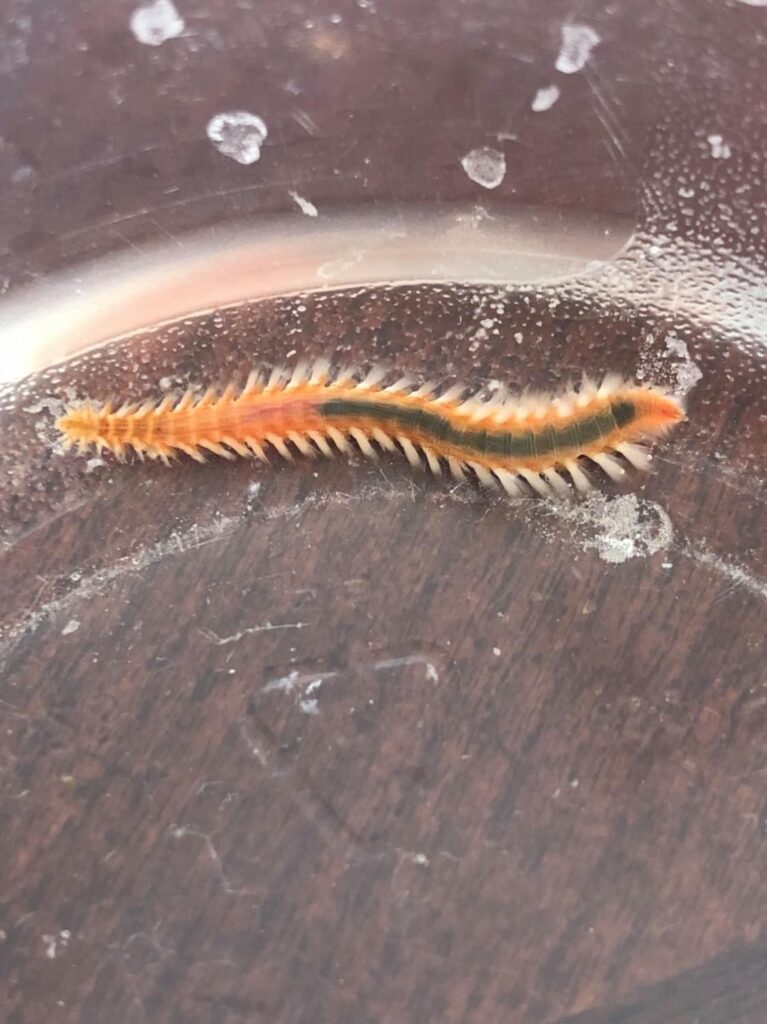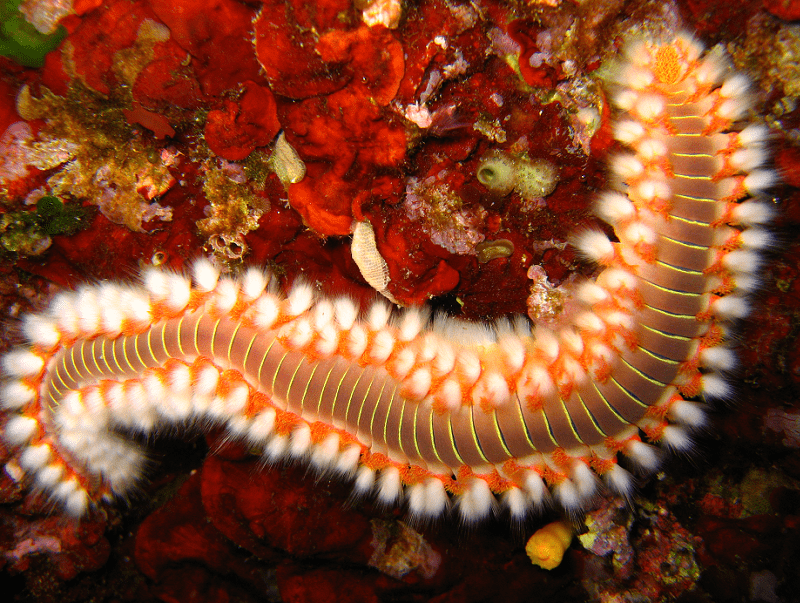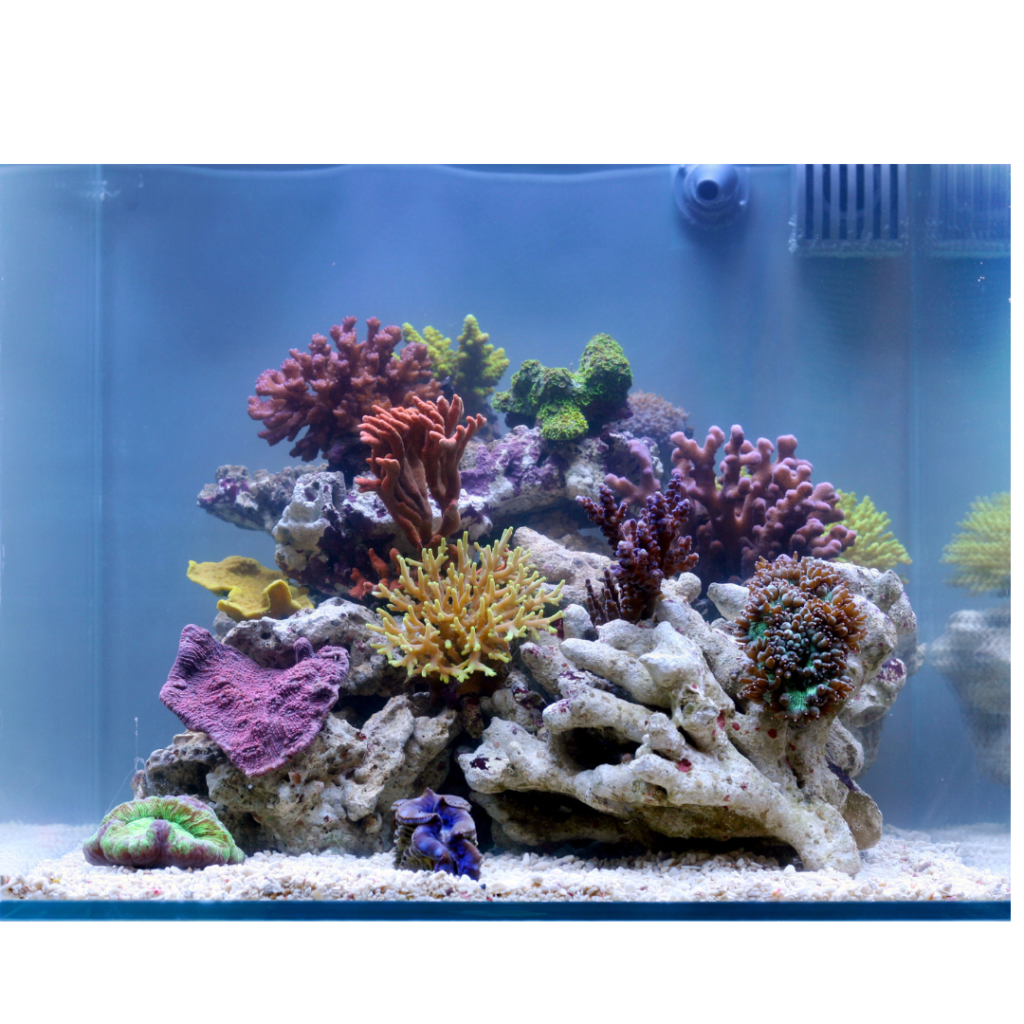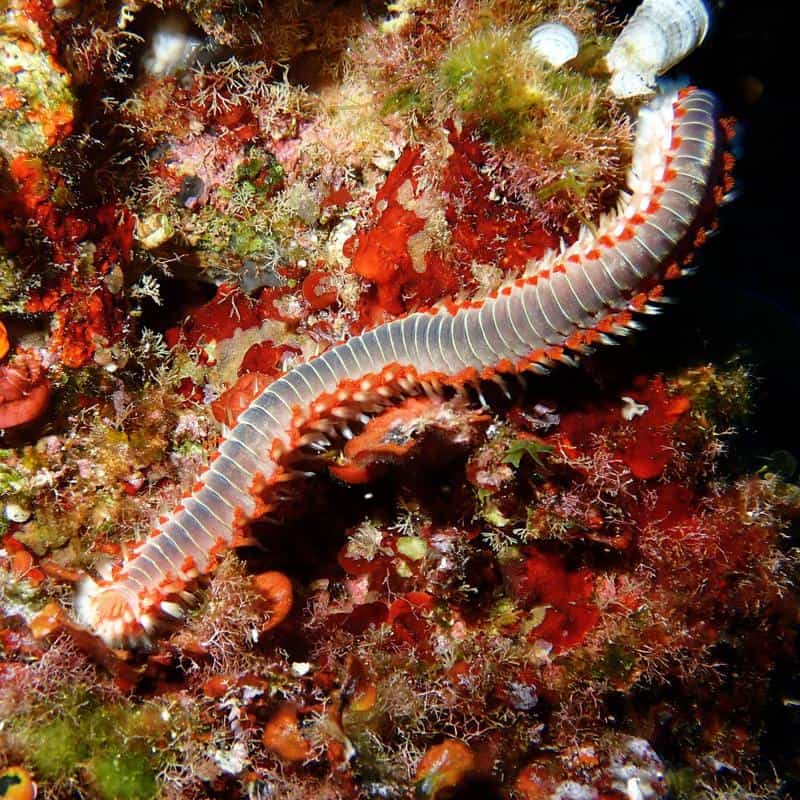Bristle worms are a common sight in many reef tanks, and their presence can sometimes be a cause for concern among aquarists. These saltwater worms, known for their bristly appearance and ability to hide in the nooks and crannies of a reef tank, can be both beneficial and potentially harmful, depending on the species and their population levels. In this article, we will explore the role of bristle worms in reef tanks, discuss how to identify and manage their populations, and provide tips on how to deal with any potential issues they may cause.
What are Bristle Worms in Reef Tanks

Bristle worms play an essential role in the reef tank ecosystem, as they help break down and consume detritus, uneaten food, and decaying organic matter. This natural cleanup crew can be beneficial to maintaining the overall health of a reef tank by keeping the substrate clean and preventing the buildup of harmful waste products.
Additionally, some species of bristle worms are known to prey on other pests, such as nuisance algae and harmful microorganisms, further contributing to a balanced and healthy reef environment.
However, not all bristle worms are created equal. Some species, like the fireworm, can be harmful to your tank’s inhabitants due to their venomous bristles and predatory behavior. These worms can pose a threat to your corals and other marine life and should be removed if identified in your reef tank.
Common Bristle Worm Species in Reef Tanks
There are several bristle worm species commonly found in reef tanks, including:
- Eurythoe complanata: Also known as the common bristle worm, this species is generally harmless and beneficial to a reef tank. They have a reddish-brown color and grow up to 6 inches in length.
- Hermodice carunculata: Known as the bearded fireworm, this venomous bristle worm species has bright red or orange bristles and can cause damage to corals and other invertebrates. They can grow up to 12 inches long and are aggressive predators.
- Chloeia viridis: This green bristle worm is another venomous species that can pose a threat to corals and other marine life. They have a greenish color and are known to be nocturnal hunters.
How to Identify Bristle Worms in Your Reef Tank:
It’s essential to correctly identify the type of bristle worm in your reef tank to determine if it is a helpful or harmful species. Most beneficial bristle worms are characterized by their segmented, elongated bodies and numerous bristles (chaetae) running along their sides. They typically have a reddish, brown, or gray coloration and can range in size from a few millimeters to several inches in length.
In contrast, harmful bristle worms, such as fireworms, have a more vibrant coloration, with bright red, orange, or yellow bristles. Their bristles are also thicker and more pronounced, making them easier to spot.
Fireworms are known to be aggressive and can cause damage to corals, invertebrates, and other marine life if left unchecked in a reef tank.
Bristle worms vs. Fireworms

Bristle worms and fireworms are both part of the polychaete family, but they differ in appearance, behavior, and impact on a reef tank. Bristle worms are generally harmless scavengers, with reddish, brown, or gray segmented bodies and numerous bristles (chaetae). They contribute to a balanced and healthy reef environment by breaking down waste and preventing detritus buildup. Fireworms, on the other hand, have more pronounced bristles and vibrant colors, such as bright red, orange, or yellow. They are predatory and can cause harm to corals, invertebrates, and other marine life in the tank.
While bristle worms are typically beneficial, their populations should be monitored to avoid overpopulation. If harmful fireworms are identified in your reef tank, they should be removed to maintain a healthy ecosystem.
To manage bristle worms and fireworms effectively, aquarists should understand their distinct characteristics, behaviors, and employ appropriate removal techniques when necessary. This knowledge will help maintain a balanced and healthy environment for corals and other marine life in a reef tank.
Read The Full Article: Bristle Worms vs Fireworms: The Difference Will Shock You
How to Get Rid of Bristle Worms:
If you have identified harmful bristle worms in your reef tank or if their population has become unmanageable, here are some effective removal techniques:
We always recommend wearing protective gear when removing bristle worms, as some species can sting you.
Manual removal: Use tweezers or forceps to carefully remove individual bristle worms from your tank. Be sure to wear protective gloves to avoid contact with their bristles, especially if you suspect they are venomous. Dispose of the removed worms in a responsible manner.
Bristle worm traps: These commercially available traps can help capture and remove multiple bristle worms at once. Place the trap in your tank, bait it with a small piece of raw shrimp or fish, and leave it overnight.
The bristle worms will be attracted to the bait and become trapped inside the device. Remove the trap the following day and dispose of the captured worms.
Natural predators: Introducing natural predators, such as arrow crabs or certain species of wrasses, can help control bristle worm populations. However, be aware that these predators may also prey on other beneficial invertebrates in your reef tank.
Always research the compatibility of any new additions to your tank to ensure they will not disrupt the overall balance of your ecosystem.
Chemical treatments: In extreme cases, you may consider using specialized chemical treatments to eradicate harmful bristle worms. These treatments should be used with caution, as they may also affect other invertebrates in your tank.
Always follow the manufacturer’s instructions and closely monitor your tank during treatment.
Prevention: One of the best ways to control bristle worm populations is by maintaining a clean and healthy tank environment. Avoid overfeeding, regularly siphon the substrate, use filter socks, and employ a protein skimmer to minimize detritus and uneaten food that may contribute to bristle worm growth.
Regular inspection and maintenance can also help you spot and address any potential issues before they become a significant problem.
Related: Best Algae Eating Saltwater Fish
Bristle Worm Sting stmptoms
Bristle worm stings, often caused by venomous species like fireworms, can result in painful symptoms such as immediate, sharp pain at the sting site, redness, itching, localized swelling, and small puncture wounds.
In rare cases, more severe reactions like nausea, dizziness, and difficulty breathing may occur. To treat a bristle worm sting, carefully remove any visible bristles, clean the affected area with soap and water, apply a cold compress, take over-the-counter pain relievers, and use topical antihistamines or hydrocortisone cream.
Monitor the area for signs of infection and consult a healthcare professional if needed.
To prevent bristle worm stings, wear protective gloves when handling live rock, coral, or other tank materials to avoid direct contact, and use appropriate tools to move or rearrange objects in your reef tank. By understanding the risks associated with bristle worm stings and taking necessary precautions, aquarists can protect themselves while maintaining a healthy and vibrant reef tank environment.
The Biology of Bristle Worms
Bristle worms, also known as polychaetes, are a diverse group of marine annelids with over 10,000 known species. They possess a segmented body, with each segment containing a pair of bristle-like appendages called chaetae.
These chaetae play a crucial role in the worm’s locomotion and defense mechanisms. Bristle worms are typically scavengers, feeding on organic debris, algae, and even other small organisms.
They reproduce both sexually and asexually, depending on the species, and can regenerate lost body parts, making them quite resilient.
Bristle Worms and Coral Health

Bristle worms can have both positive and negative effects on coral health. The beneficial species contribute to maintaining a clean reef environment by consuming detritus, algae, and dead organic matter, thus reducing the chances of harmful waste buildup. In turn, this helps corals thrive in a clean and balanced ecosystem.
However, some bristle worm species, particularly the venomous ones, can cause harm to corals by preying on them or causing physical damage with their bristles. It is crucial for aquarists to monitor their reef tank closely and take action to remove any harmful bristle worm species to protect their corals.
Bristle Worms and Invertebrate Compatibility
Bristle worms are generally compatible with most invertebrates in a reef tank, such as snails, shrimp, and crabs. However, certain predatory bristle worm species, like fireworms, can pose a threat to these invertebrates. In addition, some natural predators of bristle worms, like arrow crabs and certain wrasses, can also prey on other beneficial invertebrates in the tank.
Expert Tips and Best Practices for Bristle Worm Management
- Regular inspection: Routinely check your reef tank for signs of bristle worms, especially during feeding times or after lights-out, as they are more active during these periods.
- Maintain a clean tank: Keep your tank clean by avoiding overfeeding, regularly siphoning the substrate, and using proper filtration to minimize detritus buildup, which can contribute to bristle worm growth.
- Quarantine new additions: Always quarantine new live rock, corals, and other tank inhabitants before adding them to your main tank to prevent the introduction of unwanted bristle worm species.
- Use a refugium: A refugium can serve as a controlled environment for bristle worms, helping to maintain their population at manageable levels while still benefiting from their waste-consuming abilities.
- Employ natural predators with caution: While introducing natural predators like arrow crabs or certain wrasses can help control bristle worm populations
FAQ: Bristle Worms in Reef Tanks
As a reef tank owner, you may have questions about the presence and impact of bristle worms in your aquarium. This FAQ covers essential topics such as the potential harm bristle worms can cause to fish, methods for controlling or eliminating bristle worms, their size variations, and the potential dangers they pose to humans and other tank inhabitants
Q: Can bristle worms kill fish?
A: Most bristle worm species are harmless scavengers that do not pose a threat to fish. However, some predatory species, like fireworms, can cause harm to fish, especially smaller or injured ones, by preying on them or causing physical damage with their venomous bristles. It is essential to monitor your tank and remove any harmful bristle worm species to protect your fish.
Q: What kills bristle worms?
A: There are several methods to control or eliminate bristle worms from your reef tank, including manual removal with tweezers or forceps, using bristle worm traps, introducing natural predators (such as arrow crabs or certain wrasses), and, in extreme cases, using specialized chemical treatments. It is important to carefully research and choose the most appropriate method for your specific situation, as some approaches may affect other invertebrates in your tank.
Related: What Eats Bristle Worms? + How I Got Rid of Them In My Tank
Q: How big can bristle worms get?
A: Bristle worms vary greatly in size, depending on the species. Some species can be just a few millimeters long, while others, like the common bristle worm (Eurythoe complanata), can grow up to 6 inches in length. Some larger and more aggressive species, like the bearded fireworm (Hermodice carunculata), can grow up to 12 inches long.
Q: Are bristle worms dangerous?
A: Most bristle worms are not dangerous and play a beneficial role in maintaining a clean and healthy reef tank environment. However, some venomous species, like fireworms, can be harmful to corals, other invertebrates, and even fish. Additionally, bristle worm stings can cause pain, redness, and swelling in humans. It is crucial for aquarists to properly identify bristle worm species in their tank and take necessary precautions to protect themselves and their tank inhabitants from any potential dangers.



